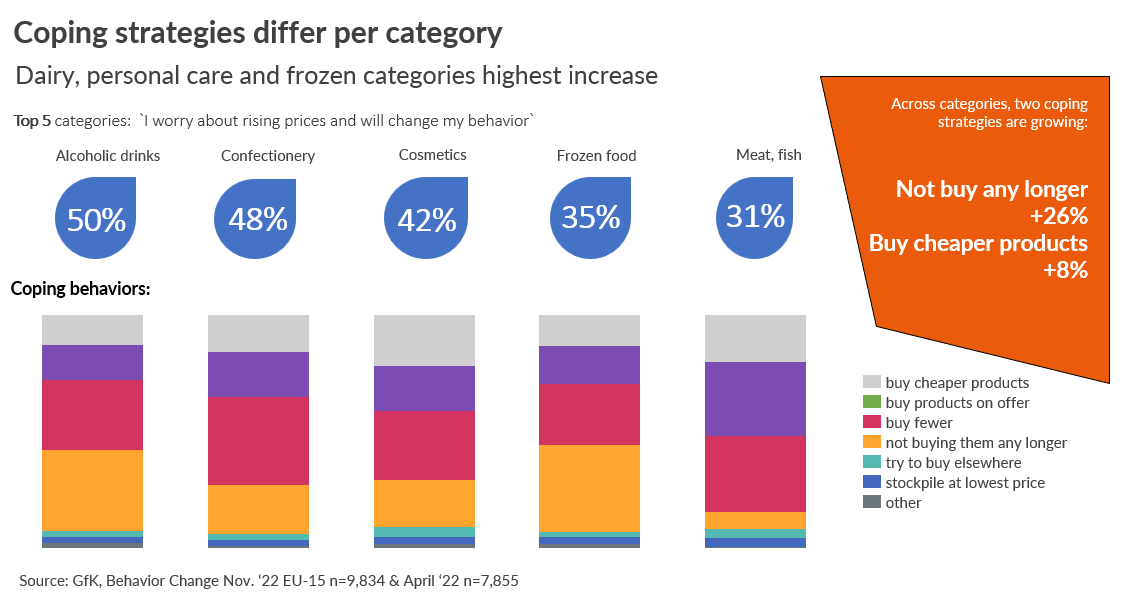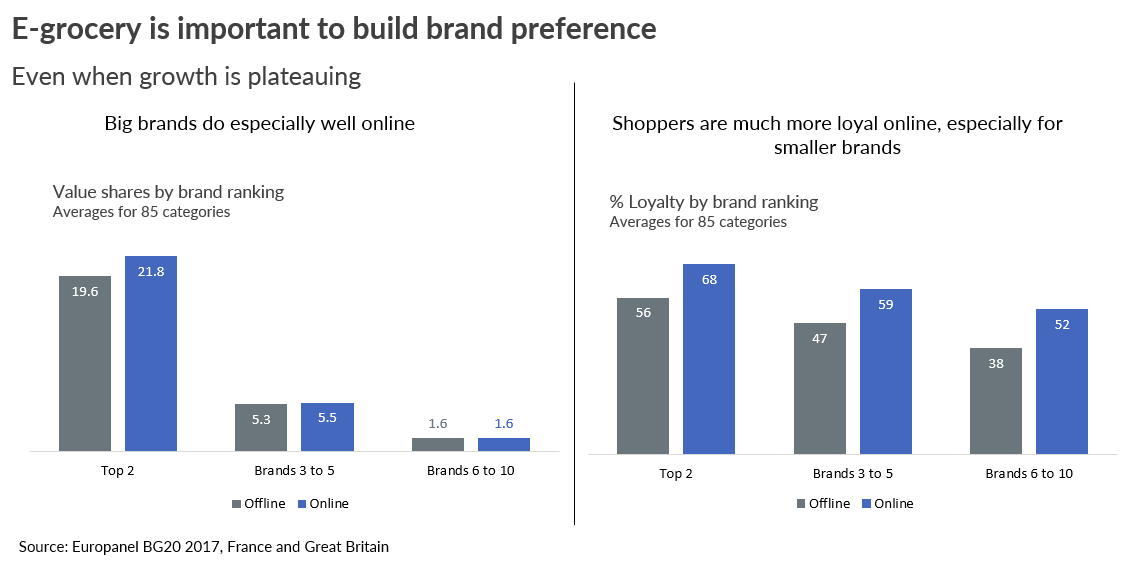The second half of 2022 and the start of 2023 were marked by economic uncertainty. With the IMF warning that up to a third of the global economy and half the Eurozone are likely to head into recession during 2023, retailers and consumers look set for more tough decisions in the months ahead. But, the picture is not the same everywhere and a huge range of factors are influencing the position consumers find themselves in across the globe – from debt levels and national GDP to rising energy and commodity costs.
Whether some markets have passed peak inflation or still have some way to go is a big question – and one that is very hard to answer. But the current economic uncertainty isn’t likely to last forever, and there are steps that brands can take today to position themselves for success when consumer confidence returns.
Rational shopping is the norm right now
2022 saw consumers adjust their spending habits in the wake of continued market uncertainty. As the conflict in Ukraine impacted a global economy already in a fragile state of recovery after Covid-19, many households have adopted a much more cautious approach.
The shift towards rational shopping is the result of a sharp decline in the spending power of many households. In the final quarter of 2022, 38% of Europeans reported struggling financially and 60% claimed to be closer to a serious budget squeeze. As a result, 73% of households are looking to save energy daily, 59% are favoring cheaper brands and 62% are limiting eating out at restaurants.
There has been a pronounced impact on sales of certain product categories. The out-of-home category has seen a big drop in demand – particularly restaurants (-54%), clothing (-48%), and amusement (-45%). Health and beauty spending has also been reduced by many consumers.

Different segments. Different strategies.
The varying impacts on different consumer groups are also leading to a range of coping and cutting strategies. The two broadest customer segments are those households that are comfortable and those that are struggling. Both have adjusted their spending behavior – but in very different ways.
While both groups are becoming more price conscious, with 60% of consumers checking prices and 54% searching for promotions, there is a gap emerging between those that are still able to treat themselves and those that are limiting purchases across the board. This second group is sizeable too, with 45% switching from premium brands to cheaper ones and 37% limiting the number of times they purchase something special to treat themselves.
Across the retail space, consumers are choosing to either not buy certain categories at all (26%) or purchase cheaper products (8%). This split can be seen most clearly when it comes to alcoholic drinks, confectionary and frozen food. For meat and fish products, many people are choosing to consume less or search for the best offers but are not stopping altogether. For cosmetics, there has been a big jump to cheaper products.

So, while it is hard to say when consumer confidence is likely to bounce back on a broader scale, it is clear that the FMCG market is shifting toward price sensitivity. This and the different coping strategies of customer segments create significant opportunities for some retail brands throughout 2023.
An example of this can be seen in the tech and durables market. Despite a challenging year in 2022 after high peaking demand during the onset of the pandemic, the tech and durables sector shows a clear value growth for energy saving devices. Smart thermostats saw a 31% increase in sales revenue in January to December 2022 when compared to the same period in 2021, and washing machines with the new energy label A class saw 50% growth over March to December 2022 compared to the previous year. The data shows that whether a product is low or high cost, consumers consider the long-term savings they offer as an adequate justification for the expense.
For both high and low income customers, price remains the most important purchase factor (70% and 78% respectively), followed closely by product features (67% and 61%) for tech and durables purchases in Europe. But a focus on price doesn’t mean consumers are flocking to the lowest cost products. In fact, entry segments have underperformed when compared to premium or mid-class segments throughout 2022. But caution and rational shopping approaches can still be seen by both comfortable and struggling customers. Both remain conservative with regard to new purchases – choosing to wait until existing products break or require an update before choosing to spend their money.
Supporting and enabling rational shopping
Whether you mainly cater to comfortable or struggling consumer segments, rational shopping is here to stay – at least for the short to mid-term. In the EU this means that, at least for now, consumers are less concerned with well-known brands and selecting the healthiest choices. Instead, they increasingly value private labels, loyalty cards and attractive promotions.
Online grocery and e-specialist brands are also gaining popularity, especially those that offer flash delivery, platforms and meal boxes. Digital retail experiences also offer a good way to spot the best deals and reduce spending on certain categories such as personal care, alcoholic beverages, home care and staple foods. Consumers also tend to behave differently online. Big brands, for example, tend to do better online and shoppers are much more loyal, especially to the smaller brands they love.

For retailers, consumer-led strategies are essential in times of increased economic uncertainty and volatility. While consumer confidence is down around the world, consumers are still willing to spend. They are looking to maximize value, whether that is the use they get, the price they pay or the pleasure they derive. Personalized products and promotions that are part of comprehensive digital retail experiences are likely to appeal to both comfortable and struggling consumers. In Sweden, for instance, personalized promotions are an influential purchasing decision for 31% of retailers. In Romania, this increases to 38%. This shift to digital retail experiences was seen across Europe in 2022, with online leaflet use by major retailers up 6% and many increasingly integrating promotions into apps and offering location-based services.
Sustainability is still important too – both for comfortable consumers and those that are looking to reduce waste and shop more efficiently. For Danish consumers, waste reduction is now a top three criterion for purchasing decisions. In Germany, sustainable products have continued to see growth in 2022, with 66% planning to buy more sustainable products in 2023.
Finding opportunities in change
For retailers, standing still and waiting for a return in consumer confidence is not an option. The current economic uncertainty is challenging, but there are opportunities for brands that can adapt. In this article we have seen that there are potential big wins for those that can deliver personalized discounts or digital retail experiences, are seen as specialists in their categories or can help rational shoppers reduce waste and act more sustainably. These are not the only opportunities out there, and hopefully 2023 will prove to be a year of innovation rather than survival.
Consumer-led strategies are impossible without up-to-date market data and insight.
GfK Consult helps brands stay in the know.




